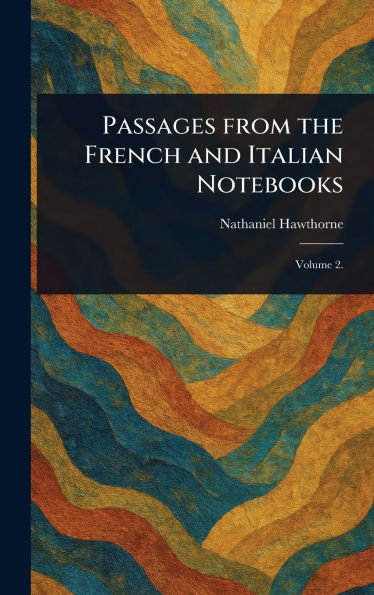Passages From the French and Italian Notebooks
Nathaniel Hawthorne (1804-64) was an American novelist and short story writer whose works often focus on history, morality and religion. He was born in Salem, Mass., and his ancestor John Hathorne was the only judge involved in the Salem witch trials who never repented of his actions. Hawthorne graduated from Bowdoin College in1825 and his first novel Fanshawe was published in 1828. Over the following years he had a number of stories published in periodicals which he collected in 1837 as Twice-Told Tales. He worked at the Boston Custom House and joined Brook Farm, a transcendentalist community, before marrying Sophia Peabody in 1842, and eventually settling in Concord. The Scarlet Letter was published in 1850, followed by The House of the Seven Gables (1851), The Blithedale Romance (1852), and other novels. He also produced several more collections of stories, notably Tanglewood Tales (1853). His writing centres on New England, many works featuring moral metaphors with an anti-Puritan inspiration, and his fiction belongs to the Romantic movement, and, more specifically, to dark romanticism. Recurring themes are the inherent evil of humanity, portrayed through tales of ancestral sin, guilt and retribution. A political appointment as consul took Hawthorne and his family to Europe before their return to Concord in 1860, where he died in 1864, survived by his wife and three children. These notebooks are a record of the family's time in France and Italy from 1858-60, providing a detailed account of Hawthorne's impressions of Rome and other locations. The extracts were first published in book form in 1871.
1100168855
Passages From the French and Italian Notebooks
Nathaniel Hawthorne (1804-64) was an American novelist and short story writer whose works often focus on history, morality and religion. He was born in Salem, Mass., and his ancestor John Hathorne was the only judge involved in the Salem witch trials who never repented of his actions. Hawthorne graduated from Bowdoin College in1825 and his first novel Fanshawe was published in 1828. Over the following years he had a number of stories published in periodicals which he collected in 1837 as Twice-Told Tales. He worked at the Boston Custom House and joined Brook Farm, a transcendentalist community, before marrying Sophia Peabody in 1842, and eventually settling in Concord. The Scarlet Letter was published in 1850, followed by The House of the Seven Gables (1851), The Blithedale Romance (1852), and other novels. He also produced several more collections of stories, notably Tanglewood Tales (1853). His writing centres on New England, many works featuring moral metaphors with an anti-Puritan inspiration, and his fiction belongs to the Romantic movement, and, more specifically, to dark romanticism. Recurring themes are the inherent evil of humanity, portrayed through tales of ancestral sin, guilt and retribution. A political appointment as consul took Hawthorne and his family to Europe before their return to Concord in 1860, where he died in 1864, survived by his wife and three children. These notebooks are a record of the family's time in France and Italy from 1858-60, providing a detailed account of Hawthorne's impressions of Rome and other locations. The extracts were first published in book form in 1871.
31.95
In Stock
5
1

Passages From the French and Italian Notebooks
172
Passages From the French and Italian Notebooks
172
31.95
In Stock

Product Details
| ISBN-13: | 9781022916234 |
|---|---|
| Publisher: | Anson Street Press |
| Publication date: | 03/28/2025 |
| Pages: | 172 |
| Product dimensions: | 6.14(w) x 9.21(h) x 0.44(d) |
About the Author

From the B&N Reads Blog
